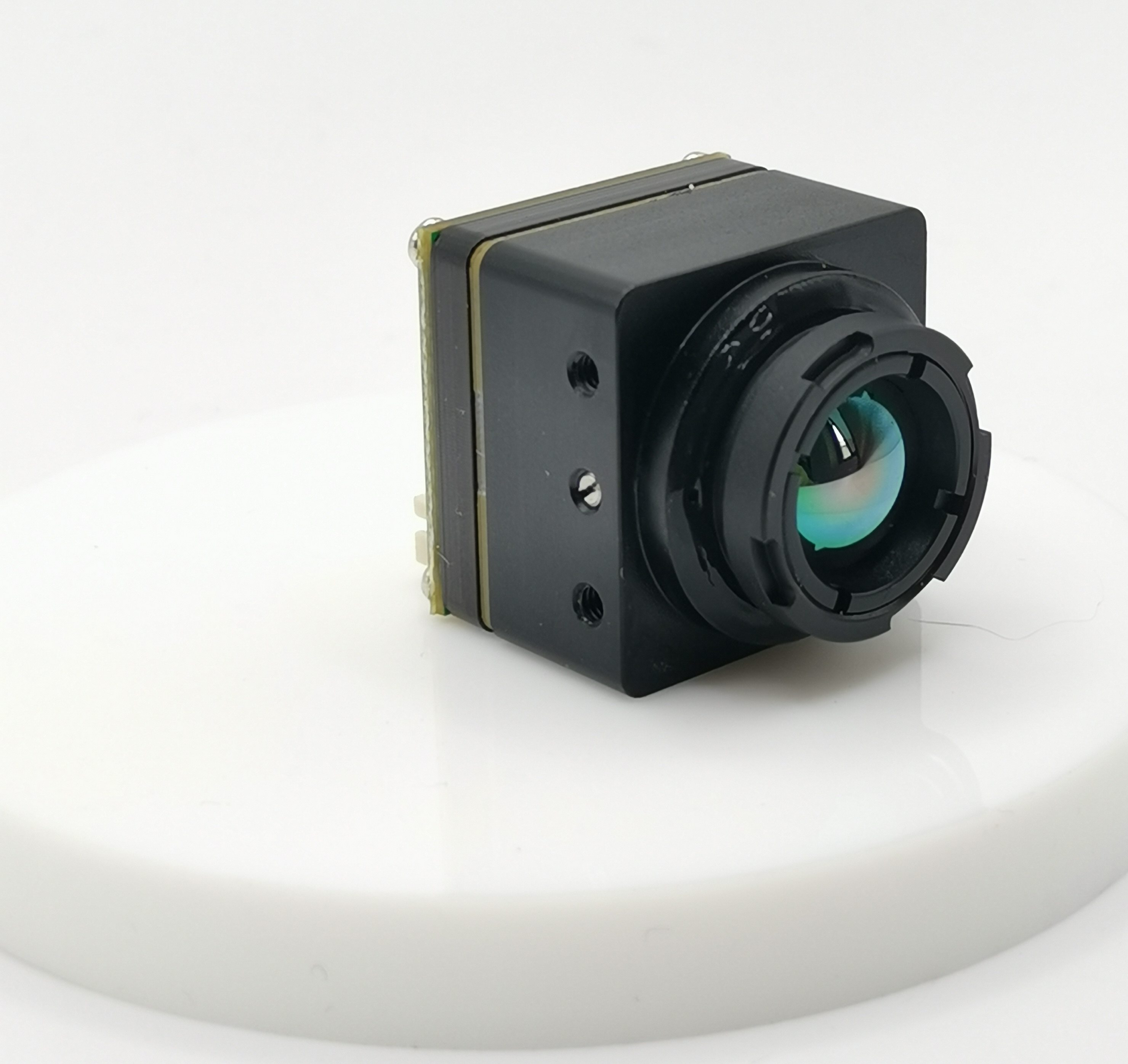How to Choose the Best Thermal Camera for Drones with FPV Technology

Why Thermal Imaging is a Game-Changer for Drones
The Magic Behind Thermal Imaging
Thermal imaging, also known as infrared thermography, operates on the principle of detecting heat signatures emitted by objects. This technology enables thermal cameras to capture the infrared radiation emitted by objects, creating a visual representation of temperature differences.
How Thermal Cameras Work
Thermal cameras work by using special sensors called microbolometers to detect infrared radiation. These sensors convert the infrared radiation into electrical signals, which are then processed to create an image. Unlike traditional cameras that rely on visible light, thermal cameras can capture images in complete darkness or through obstructions such as smoke or fog.
The Advantages of Thermal Imaging in Drones
The integration of thermal imaging in drones offers unparalleled advantages for various applications. By providing a clear view of heat disparities, thermal imaging allows drones to detect and track objects regardless of lighting conditions. This capability makes thermal imaging-equipped drones invaluable for search and rescue missions, surveillance operations, and environmental monitoring.
Real-World Applications: From Surveillance to Wildlife Monitoring
The applications of thermal imaging in drones span across diverse fields, from enhancing surveillance capabilities to aiding wildlife conservation efforts. In surveillance operations, drones equipped with thermal cameras can effectively monitor large areas and identify potential threats even in low-light environments. Moreover, in wildlife monitoring, thermal imaging enables researchers to observe animal behavior without disturbing their natural habitats.
Understanding Thermal Cameras and FPV Technology
Now, let's delve into the intricate world of thermal cameras and FPV (First Person View) technology, both of which play pivotal roles in enhancing the capabilities of drones.
Breaking Down Thermal Camera Technology
Key Components of a Thermal Camera
Thermal cameras consist of several essential components that enable them to capture and process thermal imagery. The thermal imaging sensor, also known as a microbolometer, is at the core of these cameras. This sensor detects infrared radiation emitted by objects and converts it into electrical signals. Additionally, the lens focuses the infrared radiation onto the sensor, while the housing protects the delicate internal components from environmental factors.
Understanding Resolution and Sensitivity
The resolution and sensitivity of a thermal camera are crucial factors that directly impact its performance. Resolution refers to the number of pixels in the thermal image, determining its clarity and level of detail. Higher resolution allows for more precise identification of objects within the captured imagery. On the other hand, sensitivity dictates how well the camera can detect minute temperature differences. A higher sensitivity enables the camera to discern subtle variations in heat signatures, enhancing its overall effectiveness.
The Role of FPV Technology in Drone Operation
What is FPV Technology?
FPV technology enables drone operators to view real-time footage captured by their drones as if they were onboard, providing an immersive flying experience. Utilizing a live video feed transmitted from the drone’s perspective, operators can navigate through challenging environments with enhanced precision.
Benefits of FPV in Drone Flying and Imaging
The integration of FPV technology revolutionizes drone operation by offering unparalleled situational awareness to pilots. By providing a first-person view during flight, operators can maneuver drones with greater accuracy and confidence. Moreover, for imaging purposes, FPV technology allows users to precisely position thermal cameras for optimal coverage while maintaining visual contact with potential subjects or areas of interest.
Key Features to Look for in the Best Thermal Camera for Drones
When selecting a thermal camera for drones, it's essential to consider several key features that will significantly impact its performance and suitability for your specific needs. The best thermal camera for drones should offer exceptional resolution and image quality, seamless compatibility and integration with FPV systems, and additional features that enhance functionality and durability.
Resolution and Image Quality: The Heart of the Best Thermal Camera for Drones
Why Resolution Matters
The resolution of a thermal camera is paramount as it directly influences the clarity and detail of the captured imagery. Higher resolution enables the camera to produce more detailed thermal images, allowing for precise identification of objects and heat disparities. When assessing different thermal cameras, prioritize those with higher resolutions to ensure optimal performance in various scenarios.
Balancing Resolution with Other Features
While resolution is crucial, it's also important to strike a balance with other essential features. Consider factors such as weight, size, and power consumption when evaluating high-resolution options. Additionally, assess the trade-offs between resolution and frame rate to ensure that the selected thermal camera aligns with your operational requirements without compromising overall performance.
Compatibility and Integration with FPV Systems
Ensuring Smooth Integration with Your Drone
The seamless compatibility of a thermal camera with your drone is vital for hassle-free installation and operation. Prioritize cameras designed specifically for integration with your drone model or those equipped with universal mounting options. This ensures that the camera can be securely attached to the drone without compromising its stability during flight.
The Importance of Compatibility with FPV Systems
Incorporating a thermal camera that is fully compatible with FPV systems enhances the overall user experience by providing real-time thermal imaging footage during flight. This compatibility allows operators to leverage FPV technology effectively, gaining valuable insights into temperature differentials while maintaining full control over their drone's navigation.
Additional Features Worth Considering
Adjustable Focus and Zoom Capabilities
Look for a thermal camera that offers adjustable focus and zoom capabilities, allowing operators to fine-tune their imaging parameters based on specific operational requirements. These features enable users to adapt to varying distances or focal points, enhancing flexibility in capturing thermal data across different scenarios.
Durability and Battery Life
When evaluating potential thermal cameras, prioritize models renowned for their robust build quality and extended battery life. Drones often operate in challenging environments, making durability a crucial factor in ensuring long-term reliability. Additionally, extended battery life minimizes downtime during critical missions, allowing for prolonged aerial surveillance or monitoring activities.
Top Picks for FPV Thermal Cameras
When it comes to selecting the best FPV thermal cameras for drones, the market offers a diverse range of options tailored to various needs and preferences. Among the top contenders, the iSun analog FPV thermal camera stands out as a reliable choice, backed by its key features and benefits that cater to the demands of drone operators and enthusiasts.
The iSun Analog FPV Thermal Camera: A Top Contender
Key Features and Benefits
The iSun analog FPV thermal camera distinguishes itself through a combination of advanced features and practical benefits that elevate the capabilities of drones equipped with thermal imaging technology. With a focus on delivering exceptional performance, this thermal camera boasts high-resolution thermal imaging capabilities, allowing operators to capture detailed heat differentials with remarkable clarity.
In addition to its impressive resolution, the iSun analog FPV thermal camera integrates seamlessly with FPV systems, providing real-time thermal imaging footage during drone operation. This compatibility ensures that users can leverage first-person view technology effectively, gaining valuable insights into temperature disparities while maintaining precise control over their drone's navigation.
Furthermore, the iSun analog FPV thermal camera prioritizes user experience by offering intuitive controls and ergonomic design elements. Its user-friendly interface empowers operators to adjust imaging parameters effortlessly, enabling them to adapt to dynamic operational requirements with ease. Moreover, the durable construction of this thermal camera enhances its resilience in challenging environments, ensuring long-term reliability for extended missions.
User Experiences and Applications
Users who have incorporated the iSun analog FPV thermal camera into their drone operations have reported overwhelmingly positive experiences. The seamless integration with their drones has allowed for enhanced situational awareness during flight, enabling precise navigation through various terrains and lighting conditions. Additionally, users have lauded the exceptional image quality produced by this thermal camera, emphasizing its pivotal role in capturing detailed thermal data for diverse applications.
The applications of the iSun analog FPV thermal camera span across multiple domains, including but not limited to search and rescue missions, surveillance operations, infrastructure inspections, and environmental monitoring. Its ability to detect heat differentials accurately has proven instrumental in identifying potential hazards and anomalies in both urban and natural landscapes. Furthermore, researchers and conservationists have leveraged this thermal camera for wildlife monitoring initiatives, facilitating non-intrusive observation of animal behavior in their habitats.
Other Leading FPV Thermal Cameras on the Market
Comparison of Features and Performance
In addition to the iSun analog FPV thermal camera, several other leading options are available in the market catering to diverse user requirements. These alternatives vary in terms of resolution capabilities, compatibility with different drone models, ruggedness for outdoor use cases, and additional features such as adjustable focus and zoom capabilities.
When evaluating alternative FPV thermal cameras on the market, it's essential to consider factors such as image quality consistency across varying environmental conditions,
compatibility with existing drone setups,
and overall durability for prolonged usage in demanding scenarios.
By conducting a comprehensive comparison of features and performance metrics,
drone operators can make informed decisions based on their specific operational needs
and intended applications.
Making the Right Choice
When it comes to choosing the best thermal camera for drones with FPV technology, several factors need to be carefully considered to ensure that your investment aligns with your specific requirements and operational needs.
Balancing Cost, Features, and Performance
Setting a Budget
Setting a clear budget is the initial step in making an informed decision when selecting a thermal camera for your drone. Consider the long-term value that the thermal camera will bring to your operations and weigh it against the initial investment. While it's essential to stay within budget constraints, prioritize the overall quality and suitability of the thermal camera for your intended applications.
Prioritizing Features That Matter Most to You
Identifying the features that hold the most significance for your operational needs is crucial in making a well-informed choice. Whether it's resolution, compatibility with FPV systems, durability, or additional functionalities such as adjustable focus and zoom capabilities, understanding your priorities will guide you towards selecting a thermal camera that best complements your specific use case.
The Future of Thermal Imaging and FPV Technology in Drones
Emerging Trends and Innovations
As technology continues to advance at a rapid pace, the future of thermal imaging and FPV technology in drones holds promising developments. From enhanced sensor capabilities to improved integration with drone systems, emerging trends are poised to elevate the performance and versatility of thermal cameras for aerial applications. Keeping abreast of these advancements will empower you to make future-proof choices that align with evolving industry standards.
How to Stay Updated and Make Future-Proof Choices
Staying updated on industry developments can be achieved through engaging with professional networks, attending relevant conferences or webinars, and following reputable sources of information within the drone technology domain. By staying informed about emerging trends and innovations in thermal imaging and FPV technology, you can make proactive decisions that position you at the forefront of technological advancements in drone operations.
Conclusion: Empowering Your Decision-Making
Recap of Key Points
In summary, selecting the best thermal camera for drones with FPV technology involves balancing cost considerations with feature prioritization while staying attuned to emerging trends. By setting a clear budget, identifying key features that align with your operational needs, and staying informed about technological advancements,
you can empower yourself to make well-informed decisions that maximize the value of thermal imaging capabilities for your drone operations.
Encouraging Proactive and Informed Choices
Ultimately,
empowering yourself with knowledge about current market offerings,
future trends,
and industry insights enables you to proactively select a thermal camera that not only meets but exceeds your expectations in enhancing drone capabilities through advanced imaging technologies.
See Also
Selecting the Top FPV Thermal Camera for Drone Thermal Imaging
Picking the Finest FPV Thermal Camera for Your Drone
Finding the Perfect FPV Thermal Camera for Your Drone
Contact Us: Ms. Coco Huang
E-mail: sales@iasun.cn
WhatsApp/Wechat: +86 13510421923

